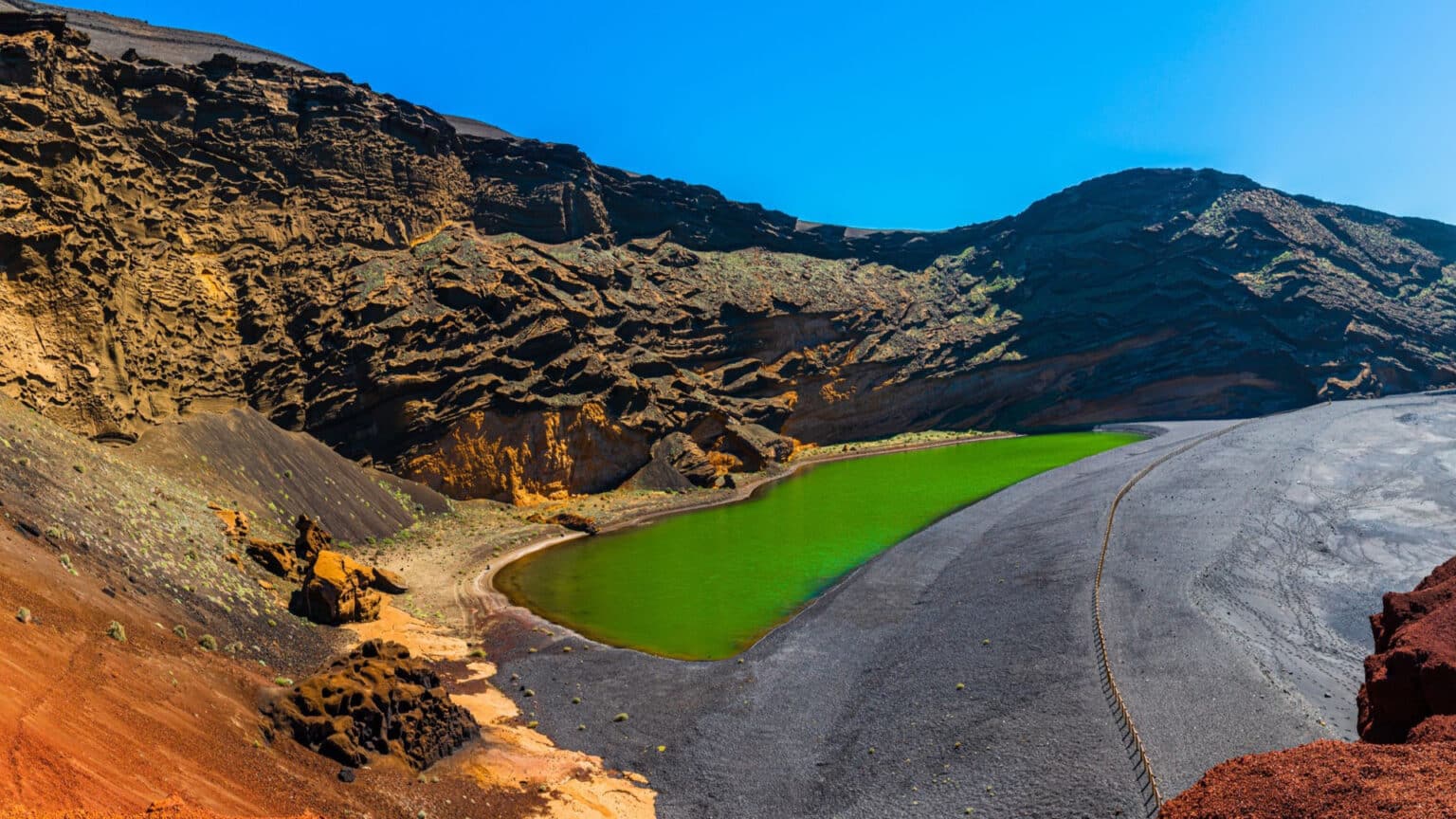In the extreme southwest of the Timanfaya National Park in Lanzarote, you will find the small fishing village of El Golfo. Before you visit, learn more about the village of El Golfo, Lanzarote.
About El Golfo
People have visited El Golfo for over three centuries to view the “Green Lake” or El Charco de Los Clicos, just a two-minute walk from the village. This small fishing village of fewer than 200 inhabitants relies heavily on tourism for its economic survival. Given the size of the village, it caters to tourists very well. The pretty whitewashed village is around 600 metres long, with most of the restaurants lining the seafront. Be aware that there are no pavements in the village, nor trees for shade, leaving you at the mercy of vehicles and the scorching sun.
How to Get to El Golfo
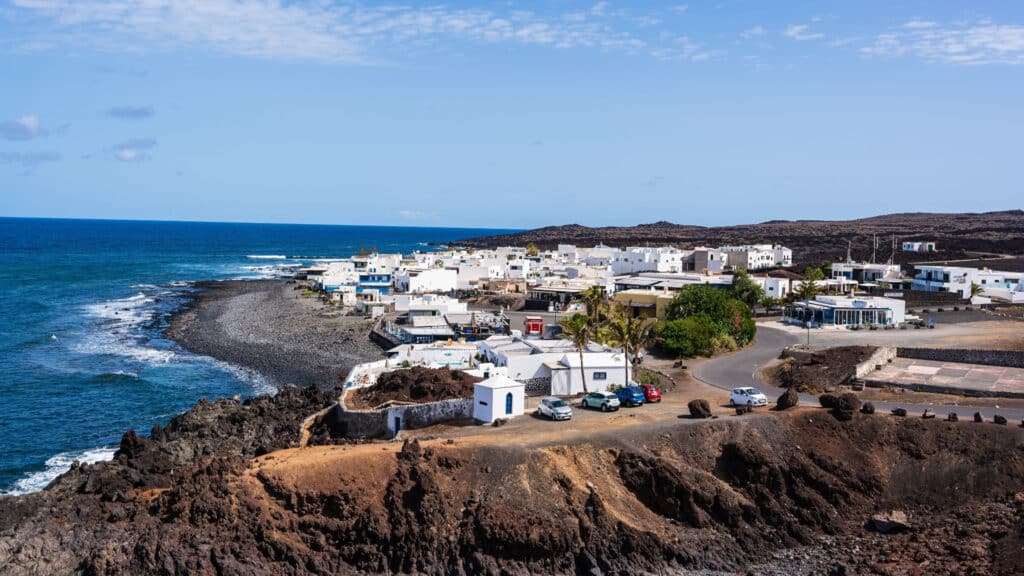
El Golfo does not have access to the public transport system, something the locals have complained about for years. You can get a taxi to El Golfo for around €50 from Arrecife or use a hire car. There is one method to get close to El Golfo, though.
The number 60 bus from Arrecife from the “Estación de Guaguas” leaves every hour at weekends and every 30 minutes on weekdays. It operates between 07:00 and 22:00. It can get you as far as Aljibe de Yaiza in about 30 minutes and for around €4.00. From Aljibe de Yaiza, you can catch a taxi for the final 8km of the journey for approximately €15.00.
The bus is a pleasant way to travel and see the scenery without the stress of driving and is more relaxing than a hurried taxi ride.
How to Get to the Green Lake
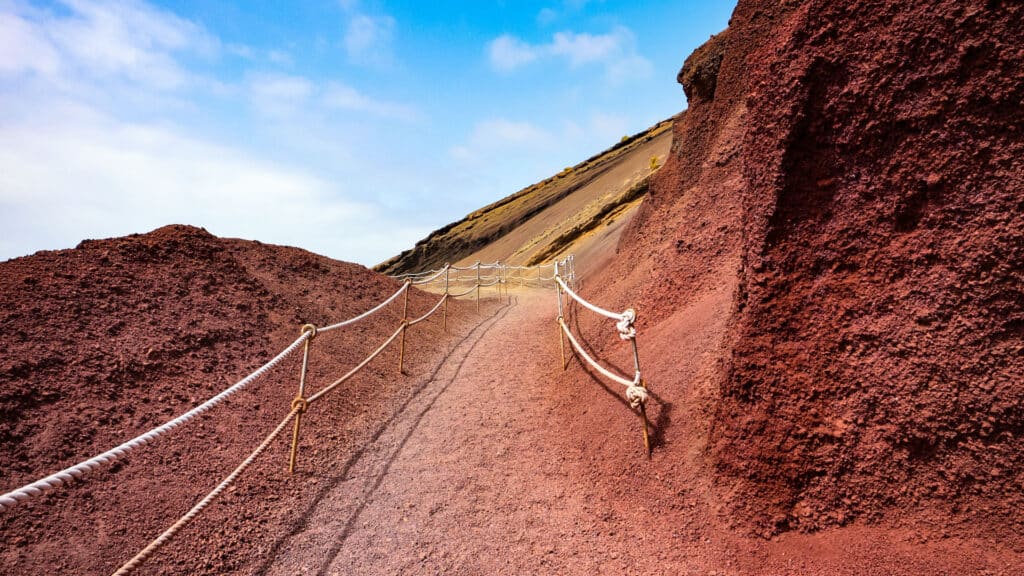
To get to the green lagoon, drive towards the beach “Playa del Paso “at the North End of the village on Avenida Marítima; the road is a dead end at the parking area. There is ample free parking on your right next to the children’s play area. Take the cliffside path for 150 metres to the viewing platform.
What to Do in El Golfo
El Charco de Los Clicos
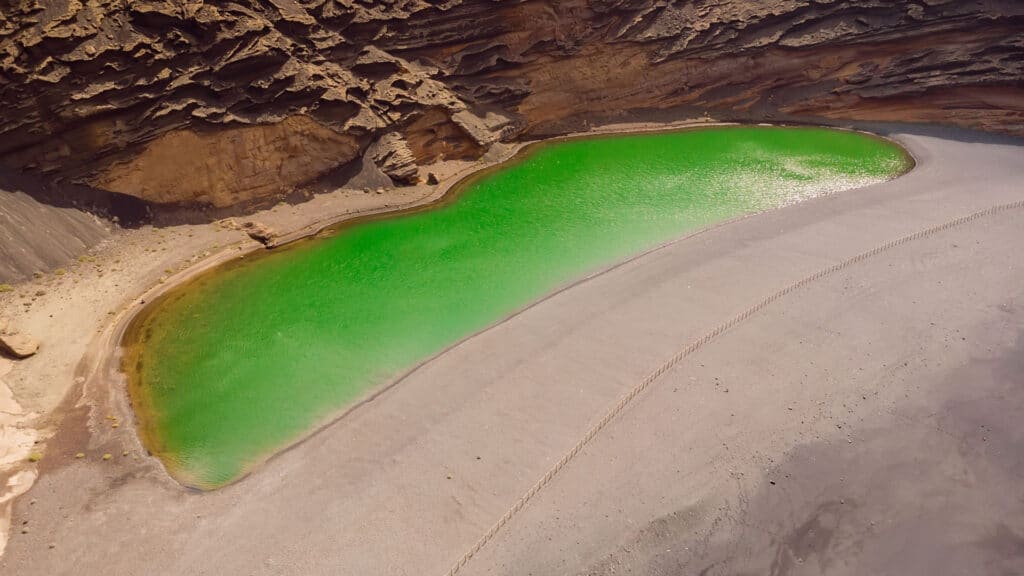
El Golfo is famous for being the gateway to the incredible El Charco de Los Clicos. No visit to the village is complete without viewing this natural phenomenon. The “pool” is a volcanic crater formed during the massive eruptions between 1730 and 1736.
The unusual green colour is partly due to the sulphurous water but primarily because of algae bloom from the “maritime ruppia”, which produces chlorophyll in different shades of green, depending upon the seasons. The “Clicos” were a type of bivalve mollusc (similar to a mussel or clam). They were abundant in the lagoon and were a local delicacy until someone stupidly let two turtles free in the lagoon. The turtles had a feeding frenzy, and the “clicos” became extinct.
The lake was reformed some time ago as the sand accumulating was threatening the habitat. Now it has been extended to cover a total of 7000 square metres, 100 metres long, but only a few centimetres deep.
Local craftspeople are regular visitors to the lake to collect olivine. Olivine is a bright green semi-precious stone. It is one of the most common minerals on the earth, yet, only a few localities yield significant examples with which they design jewellery that can be purchased nearby.
You can visit the lake at any time, and it is free, but as it is part of the natural park, entering the water is forbidden, and I’m not sure why you want to anyway!
Playa del Paso
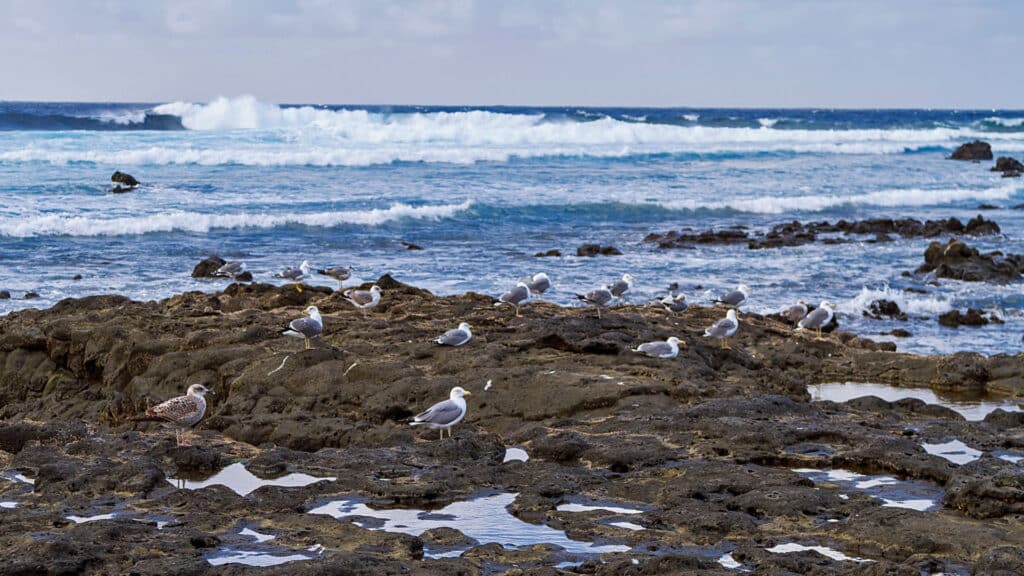
This is the beach of El Golfo and is where the lagoon is located. The beach is gravel and around 320 m long and 30 m wide. It is not heavily frequented because the sea has strong currents, making it unsuitable for bathing.
Punto del Jurado
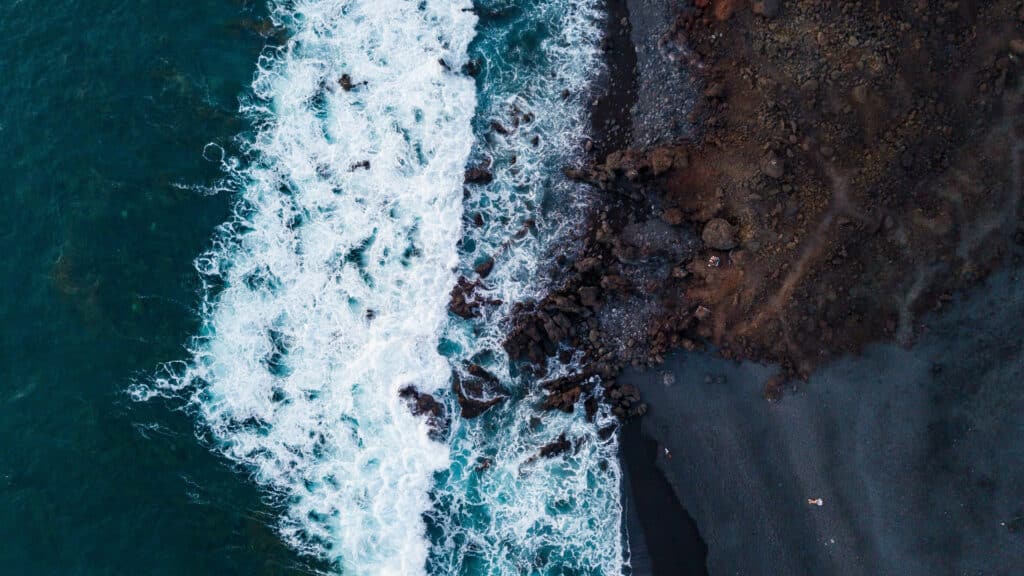
You can watch the waves crashing in at Punto del Jurado, which is just a few metres away from the road and accessible parking. There is an excellent vantage point on the rocks to see the power of the sea, but sturdy footwear is recommended to access it.
El Golfo Pardelator
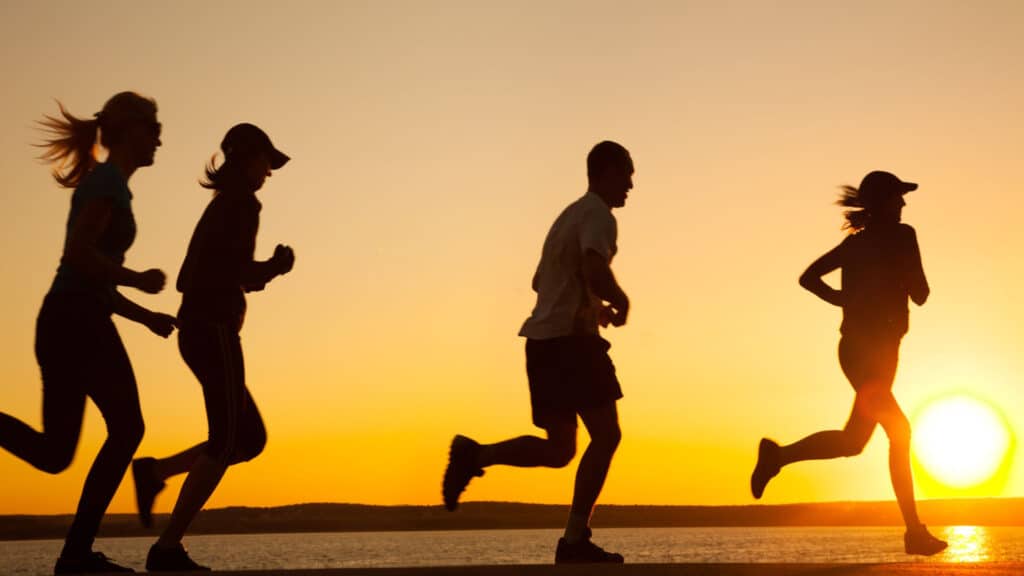
Adventurous runners should make their way to El Golfo in mid-October, when, for eight years, the El Golfo Pardelator has been held. This is a famous 10.5-kilometre race that runs along spectacular lava paths and tracks.
What Facilities Are Available in El Golfo
Although just a tiny village, El Golfo has a mini market, a Bazar shop and a lovely arts and crafts shop. Called Tatagua Arte, the craft shop sells quality artisan jewellery and local artefacts. There is also an ATM if you find a sudden need to check your bank balance or withdraw some cash.
Where to Eat in El Golfo
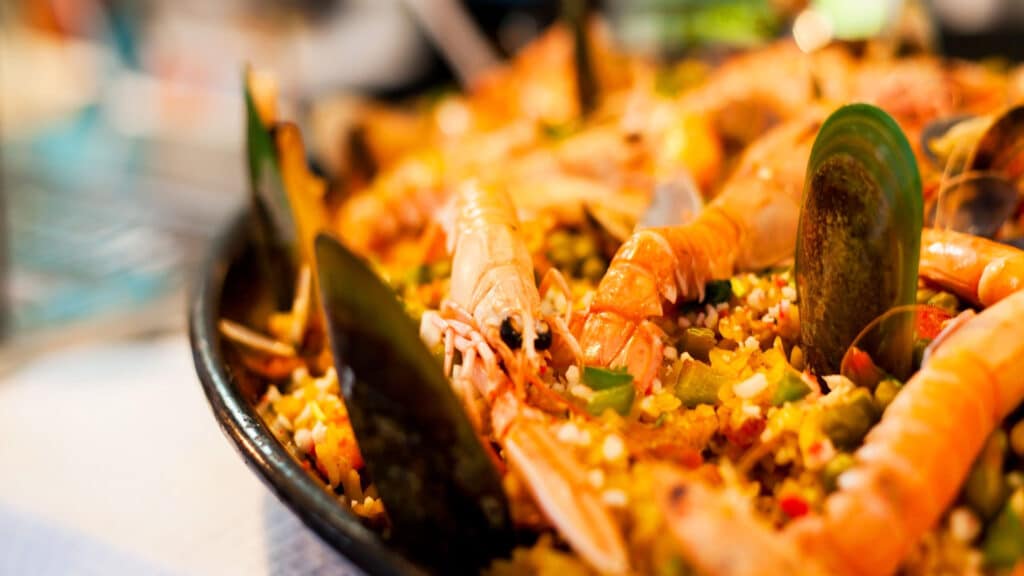
With over a dozen restaurants lined along the seafront, El Golfo is well equipped to give you a great dining experience. All of the restaurants are highly rated on review sites, and the fierce competition ensures quality and standards stay high. Still, it is advisable to book, especially during the summer months. Fresh seafood is the staple of the restaurants, so try the wrinkled potatoes with mojo by all means, though there is nothing like eating the fruits of the sea whilst watching the waves. Try a bottle of local white wine from Lanzarote with your meal, made from the Malvasia grape by the multi-award-winning El Grifo vineyard.
Top reviewed restaurants in El Golfo
- Restaurant Costa Azul
- Restaurante Casa Torano
- Restaurante El Caleton
Where to Stay in El Golfo
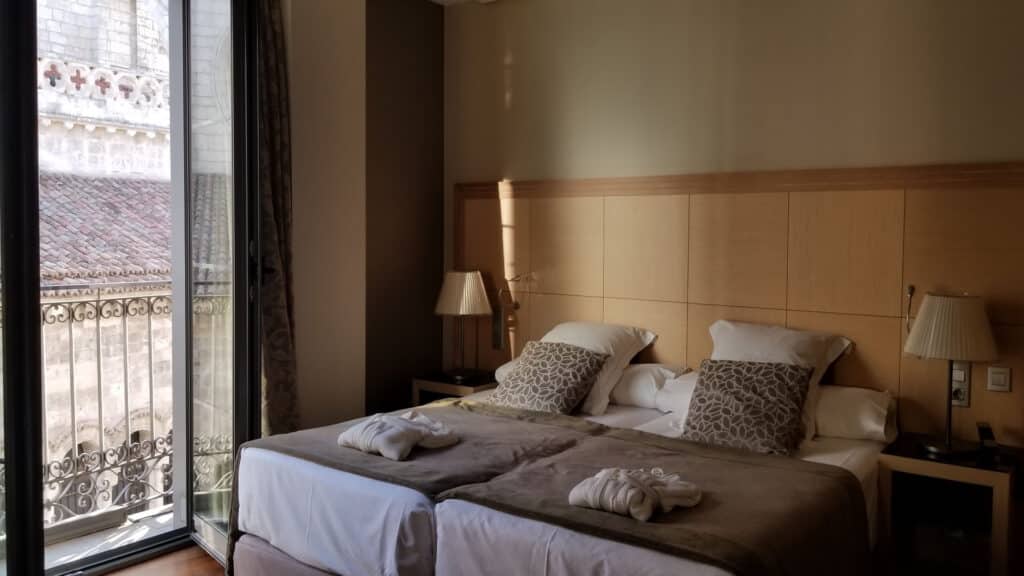
There is a small selection of privately rented accommodation in El Golfo, such as private houses, apartments and a stunning Casa rural in the south of the village. The El Hotelito Del Golfo is a 3-star hotel with a pool and good customer reviews.
El Golfo in Popular Culture
The landscape of El Golfo and the green lake may be familiar to film buffs. Back in the Winter of 1965, film director Donald Chaffey was taken aback by the area and chose it for his iconic film One Million Years B.C, starring Raquel Welsch. The latter famously exited the waters in a fur bikini. The links to movies carried on in 1975 with the spaghetti western Por la Senda más dura “Take a Hard ride” with Lee Van Cleef, and in 1985, the science fiction classic Enemigo mío (Enemy Mine) starring Dennis Quaid. The outstanding landscapes are still enthralling cinema-goers to this day.
Conclusion
A small village with a unique natural phenomenon, a wide choice of restaurants, a beach and a cinematic history. Any visit to Lanzarote should include at least a day or so at El Golfo.



